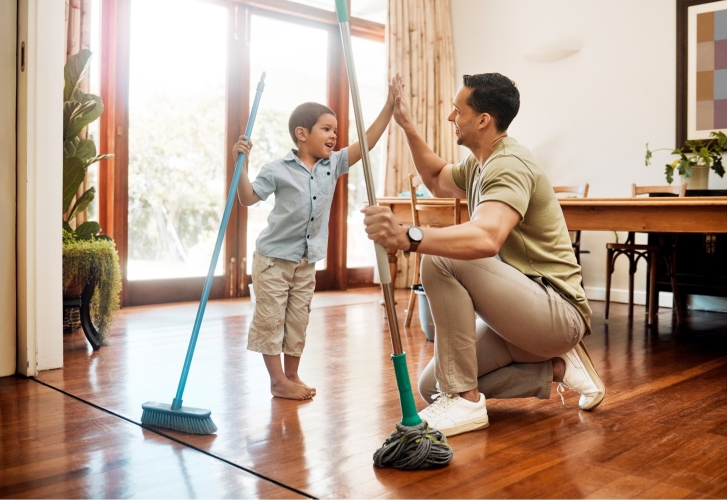Understanding Seasonal Allergies
For many people, the arrival of spring flowers and fall foliage frequently marks the beginning of seasonal allergies. These allergies can make daily life uncomfortable by causing symptoms including congestion, itchy eyes, and sneezing. It is critical to comprehend the underlying reasons of these allergies and how to lessen their effects. While outdoor pollen is a known culprit, indoor allergens can also significantly exacerbate symptoms.
Reducing exposure to allergens both indoors and outdoors is part of a complete strategy for managing these allergies. Innovative solutions and services, such as those offered by Sparkulous, provide strategies for maintaining a healthy home environment that can significantly alleviate allergenic reactions. Consistent home cleaning, especially targeting dust, pet dander, and mold, is crucial in minimizing indoor allergen buildup. Incorporating allergen-reducing habits into your regular cleaning routine can make a noticeable difference in how you feel throughout the year.
Common Indoor Allergy Triggers
Indoor environments can harbor a multitude of allergens that trigger allergic reactions. Common irritants include dust mites, pet dander, mold spores, and pollen that enter the home from outside. These allergens can be present in areas such as carpets, furniture, and bedding, where they can accumulate and become airborne.
The first step to successfully controlling your allergies is knowing what causes them. Regularly identifying and minimizing certain allergens can significantly decrease the frequency and intensity of allergy symptoms.
The Importance of a Clean Home
A clean home is essential for reducing allergy exposure. Frequent cleaning practices can aid in the removal or reduction of allergens, creating an atmosphere that promotes respiratory health and general well-being. A clean home isn’t just about aesthetics; it directly affects the physical health of its occupants.
Keeping your living space tidy and sanitized creates an environment where allergens have fewer hiding places, making it easier to manage symptoms. Basic techniques like regularly dusting, using a HEPA filter while vacuuming, and washing bedding in hot water can have a big impact.
Effective Cleaning Strategies
Implementing effective cleaning strategies is crucial for allergen control. Begin with high-traffic areas where allergens are most likely to accumulate. When dusting, use microfiber towels since they are more effective at capturing dust than conventional cloths. When vacuuming carpets and rugs on a regular basis, use a vacuum with a HEPA filter to capture small particles.
Additionally, controlling humidity levels with a dehumidifier can prevent mold growth, a common allergen. Bathroom and kitchen areas should be monitored closely for dampness, as moisture accumulation can lead to mold proliferation.
Benefits of Air Purifiers
Air purifiers can significantly reduce indoor allergies. These devices work by filtering harmful pollutants and allergens from the air, providing cleaner and healthier air to breathe. Because a HEPA filter can capture even the smallest particles, choosing an air purifier with one can be especially advantageous.
Placing purifiers in frequently used rooms, such as bedrooms and living rooms, can help maintain air quality throughout your home.
Maintaining a Healthy Indoor Environment
Beyond cleaning and purification, maintaining a healthy indoor environment involves regular maintenance and proactive measures. Replace HVAC filters seasonally to ensure optimal performance and air quality. Encourage a no-shoe policy indoors to prevent tracking outdoor allergens inside.
Further reducing sources of allergens, such as using hypoallergenic materials for bedding and investing in allergen-proof mattresses and pillow covers, can also be beneficial. Plants can serve as natural air filters while providing a pleasant aesthetic and boosting indoor air quality.
Conclusion
Managing seasonal allergies requires a multifaceted approach that begins with understanding common indoor allergens and employing effective cleaning strategies. Using air purifiers and keeping your house clean and well-ventilated can considerably decrease the pollen load in your home.
Ultimately, creating a haven free from allergens is key to reducing allergy symptoms and improving the quality of life during allergy season and beyond. Use these tips to turn your house into a comfortable and healthful haven.

